Submitted by WA Contents
cave_bureau opens exhibition that examines the history of volcanic cave systems of Kenya
Denmark Architecture News - Jul 13, 2023 - 16:34 3229 views
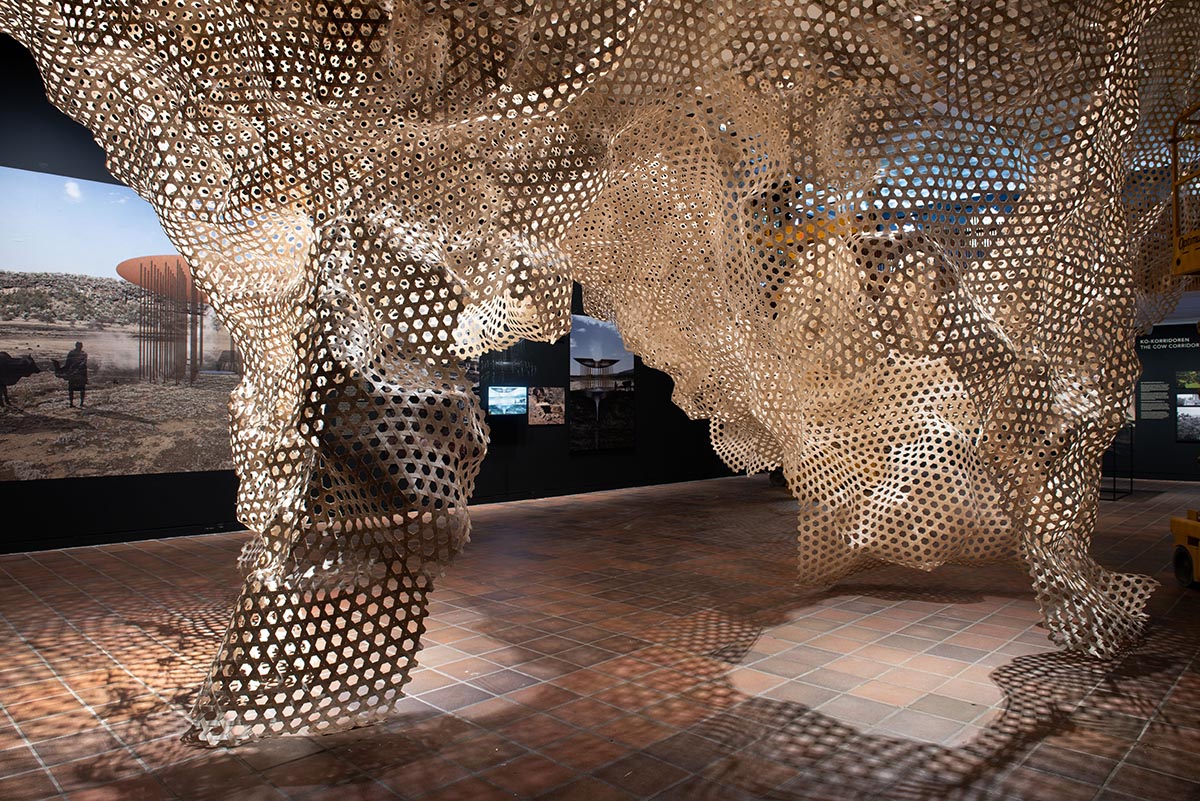
Kenyan architectural studio cave_bureau has opened an exhibition that examines the history of the volcanic cave systems of Kenya that looks back the origins of the structures and plays an important role in decolonialisation and decarbonisation.
Titled The Anthropocene Museum, the show is currently on view at the Louisiana Museum of Modern Art from June 29 to November 26, 2023 in Denmark.
The exhibition takes visitors into an extensive reasearch about the history of Kenyan volcanic caves, putting emphasis on how a heritage and traces of the past could lead new propositions, projects and drive sustainable solutions for the future of humanity.
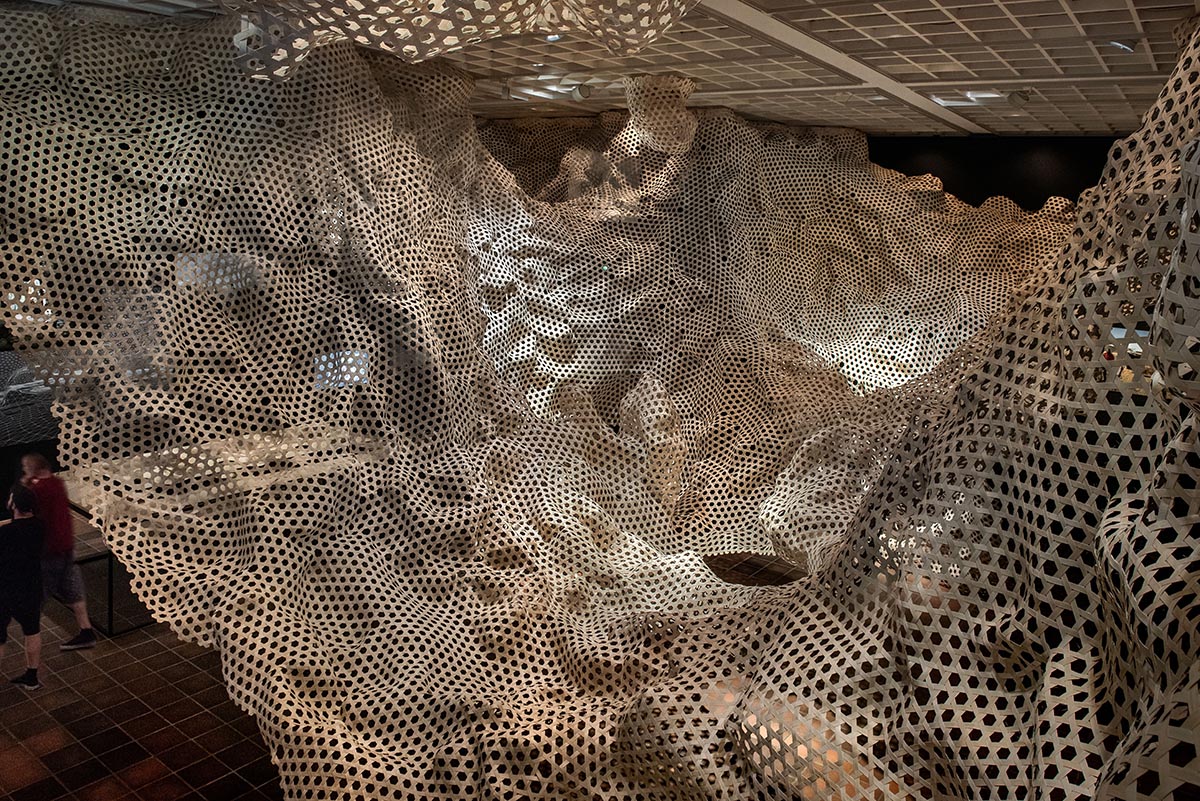
Installation view. Image © Louisiana Museum of Modern Art / Kim Hansen
Nairobi-based cave_bureau is led by two architects, Kabage Karanja and Stella Mutegi whose their research are called "reversed futurism" where the history of human presence and knowledge can lead sustainable solutions for the future.
They described their approach as "only by delving into, and learning about the past they can create sustainable solutions for the future."
The Anthropocene Museum Exhibition contains installations, films and proposals for architectural interventions in the landscape. A key element of the exhibition is a one-to-one scale installation which was 3D-printed as the architecture of the caves.
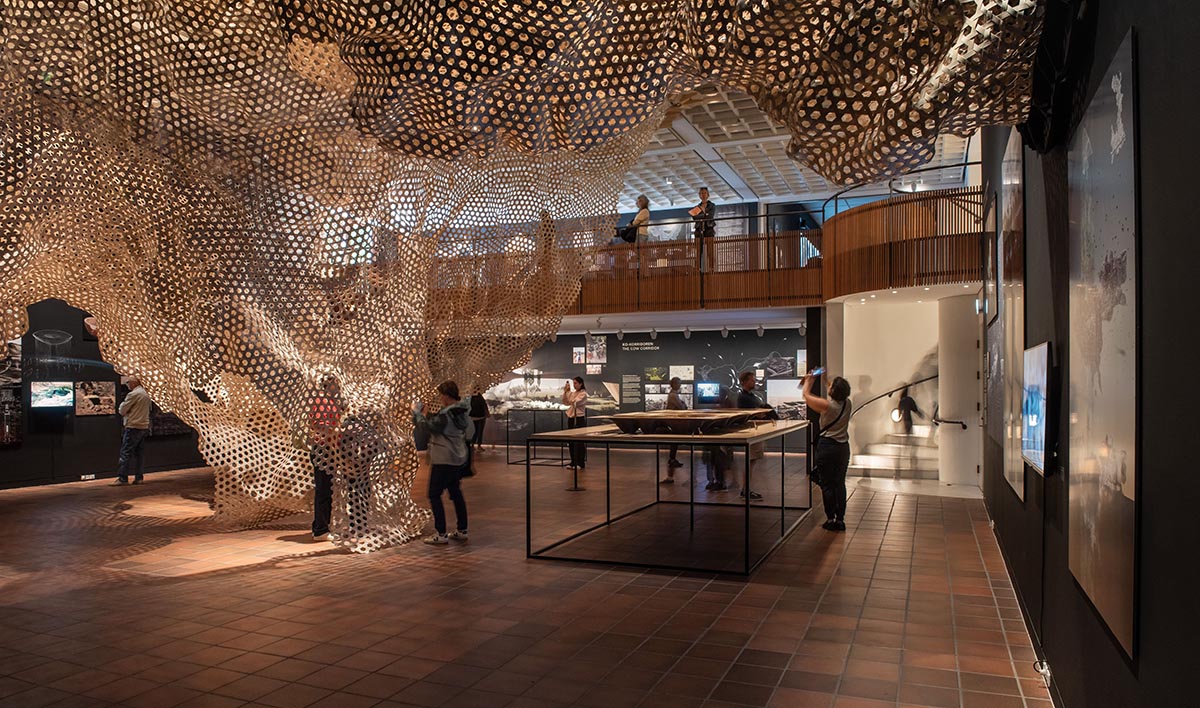
Installation view. Image © Louisiana Museum of Modern Art / Kim Hansen
"We are brought back a million years in time to the landscapes that formed the setting for the origins of humankind, before proceeding to other – later – events that partly paved the way for the time of upheaval in which we live today –the Anthropocene," said the Louisiana Museum of Modern Art.
"cave_bureau base their work on millions-of-years-old volcanic caves around Nairobi, which contain important testimonies to Kenya’s history."
"This was where the first hominids lived, while – during the colonial age – East African slaves and freedom fighters passed through these subterranean caves."
"In other words, they house vital milestones in the progression of the planet to the Anthropocene – the era in which humankind’s influence on nature is now all too visible," the museum added.
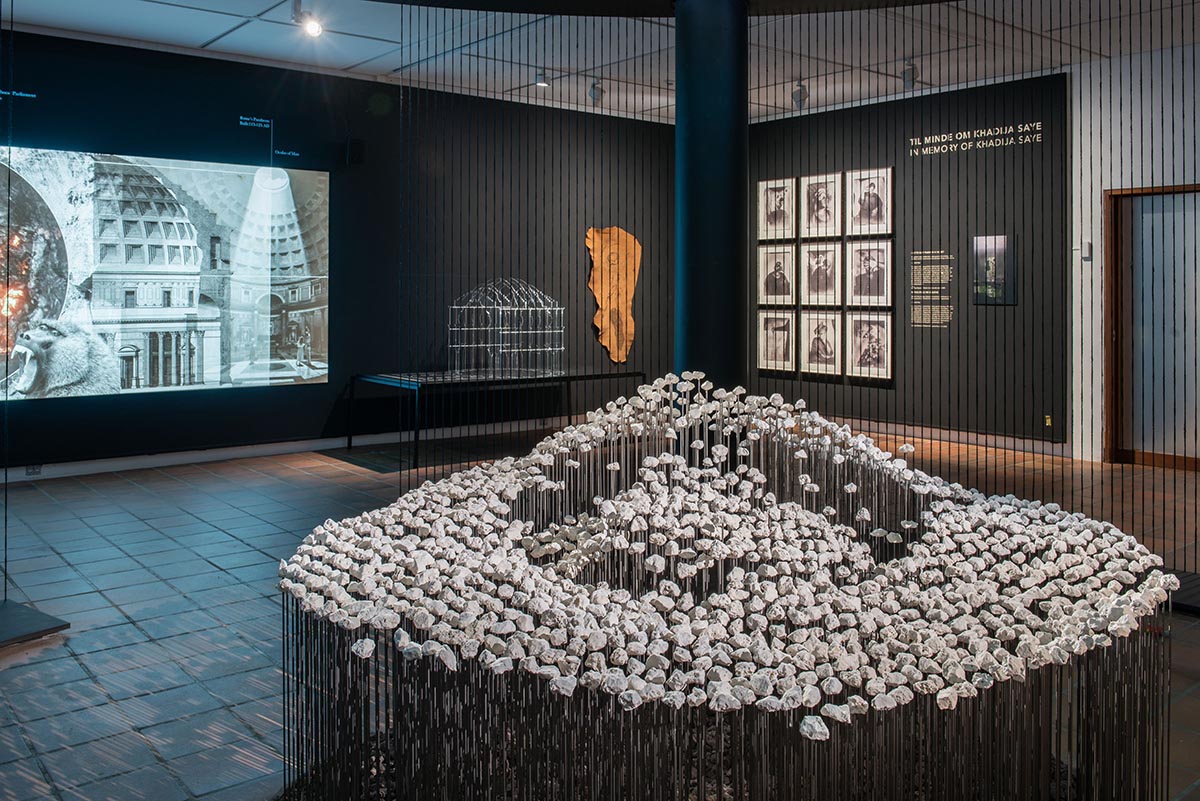
Installation view. Image © Louisiana Museum of Modern Art / Kim Hansen
The exhibition also looks at how the area around the caves is used as a source of geothermal energy extraction –which has a crucial player in the green transition and can have major consequences for nature, animals and humans.
According to cave_bureau, the Maasai, an indigenous people in Kenya, are facing with the destruction of their homes and their coexistence with nature caused by geothermal energy extraction.
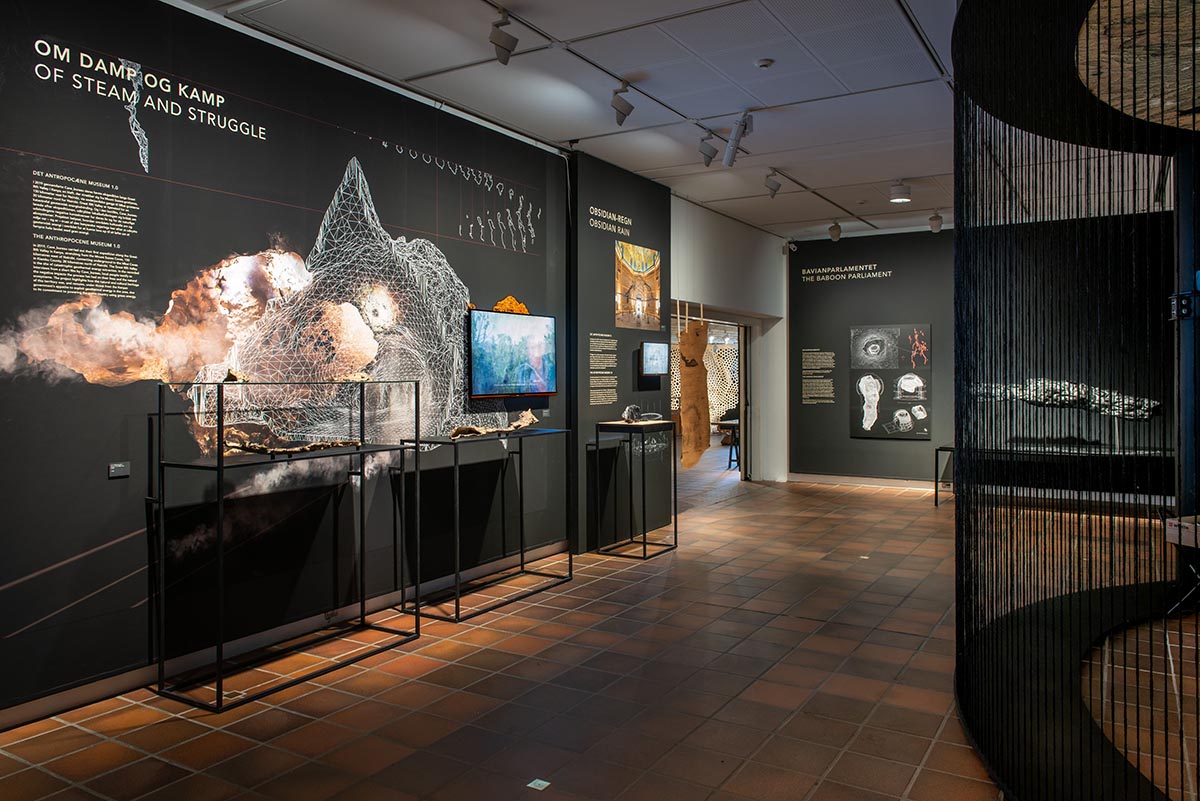
Installation view. Image © Louisiana Museum of Modern Art / Kim Hansen
"The green revolution is legitimised by its positive global narrative," said the office.
"This makes the struggle for indigenous culture difficult, even though these groups may very well be the people who are living most sustainably and consuming the lowest amount of CO2," it added.
In collaboration with indigenous peoples, anthropologists and geologists, and in their films and architectural projects, cave_bureau "seek to reveal the inequality that inextricably accompanies green energy transition."
All their projects, under the umbrella title The Anthropocene Museum, are also an attempt to formulate the foundation on which their practice as young African architects should be based.
"To avoid repeating the oppression of African peoples by history, we need to listen to their voices as we build the towns, cities and communities of tomorrow," stated the museum.

Installation view. Image © Louisiana Museum of Modern Art / Kim Hansen
The Door of No Return
The entrance to the exhibition is a version of the gate through which West African slaves passed before departing by ship. A number of these slaves were shipped to the Danish West Indies.
In the exhibition, the architects have enlarged this gate –The Door of No Return – and transformed it into an installation of limestone stalactites.
Limestone can be found in the Shimoni Cave in eastern Kenya, but the stones for this installation came from the limestone quarries in Faxe, Denmark. The gate invites us to travel back in time in the company of cave_bureau.
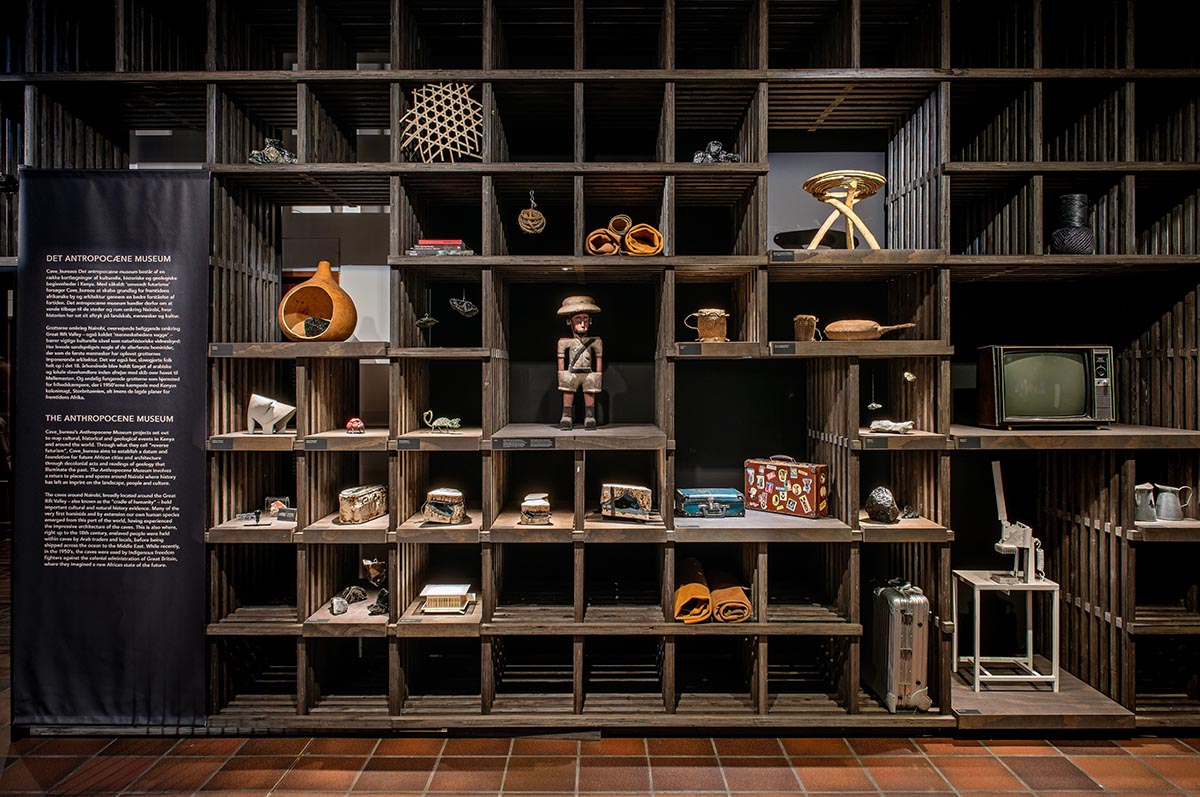
Installation view. Image © Louisiana Museum of Modern Art / Kim Hansen
The first room of the exhibition features a number of Anthropocene Museum projects. On display are analytical surveys, interviews, installations, discussions and conversations presented in short films.
There is also a collection of objects that have an impact on Kenya’s cultural and natural history – all of which form the basis for cave_bureau’s activist architecture.
The same room contains a cave_bureau installation about the geological events that shaped the volcanic caves, featuring models that inscribe the caves in the history of architecture – like the architecture that the very first people knew.
According to Cave_bureau, "knowledge of geology which is still shaping our world and consequently our architecture should form the very foundation for the architecture of tomorrow."
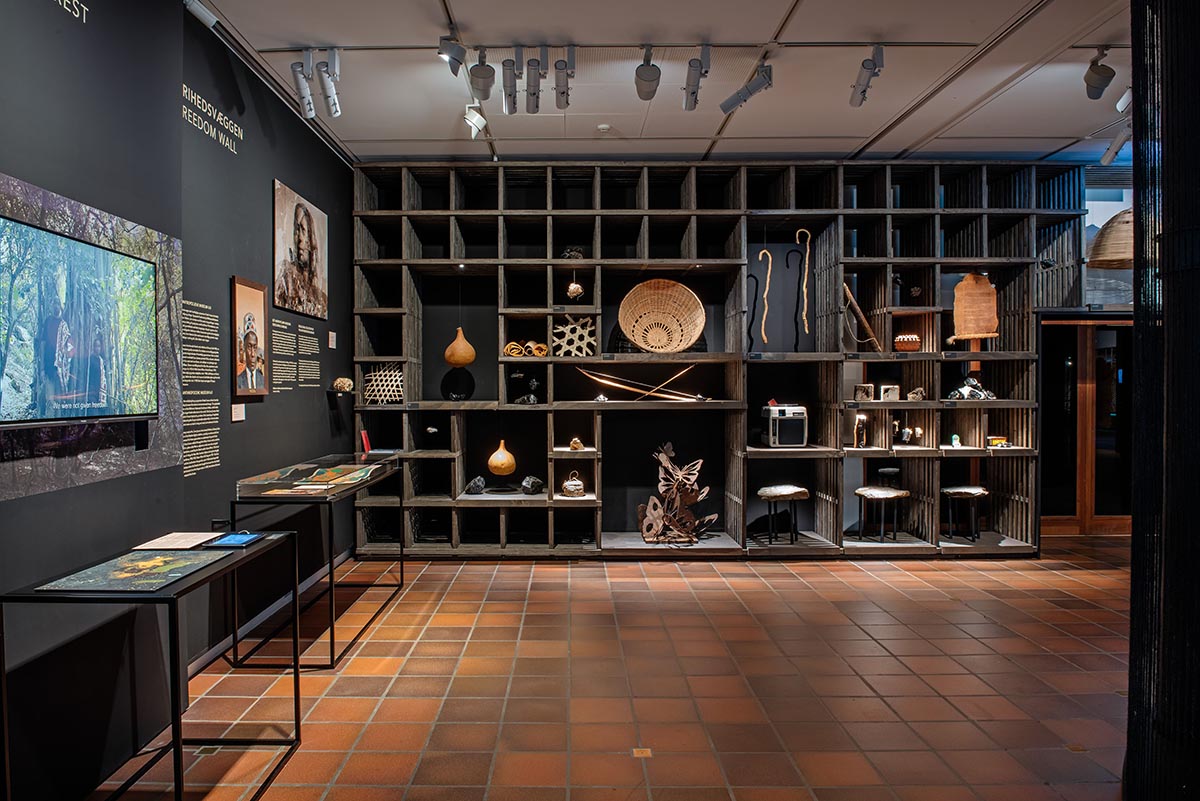
Installation view. Image © Louisiana Museum of Modern Art / Kim Hansen
Cow Corridor
The third section of the exhibition shows projects that are directly derived from the architecture of the caves.
Cow Corridor is a restoration of Maasai grazing routes through Nairobi, which have been closed for pastoral migration since the advent of the British in 1880.
cave_bureau 3D scans the caves and uses the complex spaces as a model for new, site-specific architecture.
A one-to-one 3D-printed installation that makes up the heart of the show. According to the museum, "this helps them both to understand and release the traumatic elements of history associated with the caves, and to get to grips with the complex geological processes that created nature’s own architecture."

Installation view. Image © Louisiana Museum of Modern Art / Kim Hansen
Cave woven in rattan
At the exhibition, there is also a display of the Shimoni Cave, located on the shores of the Indian Ocean, which has been transformed into a woven rattan structure - an ambitious, full-size attempt to reproduce the spatiality and materiality of the caves.
Inspired by pre-colonial craftsmanship and building techniques, the woven work is the result of a collaboration with CITA – The Centre for Information Technology and Architecture at the Royal Danish Academy – Architecture, Design, Conservation in Copenhagen.
The latter devised a programme to transform shape into a weaving pattern. Under the direction of Jack Young, PhD, and Professor Phil Ayres, the installation has been handwoven at Louisiana.

Installation view. Image © Louisiana Museum of Modern Art / Kim Hansen

Installation view. Image © Louisiana Museum of Modern Art / Kim Hansen
The Anthropocene Museum is the sixth and final exhibition in The Architect’s Studio series at Louisiana Museum of Modern Art. Opening in 2017, the first exhibition in The Architect’s Studio series presented Amateur Architecture Studio in China, headed by Wang Shu and Lu Wenyu.
The following year’s exhibition, So Far ..., featured Chilean architect Alejandro Aravena and the Elemental studio. In 2019, the series showcased Mexican architect Tatiana Bilbao, and in 2020-21 Indian architect Anupama Kundoo.
In 2022, the fifth instalment in the series presented Forensic Architecture’s work to uncover, map and submit evidence of conflicts and crimes around the world.
The Architect’s Studio: cave_bureau is organized by curator Kjeld Kjeldsen and curator Mette Marie Kallehauge.
cave_bureau was founded in 2014 by architects Kabage Karanja and Stella Mutegi. Their work focuses on the anthropological and geological context of the African city to cope with the complexities of today's contemporary rural and urban lives.
Top image: Installation view. Image © Louisiana Museum of Modern Art / Kim Hansen.
